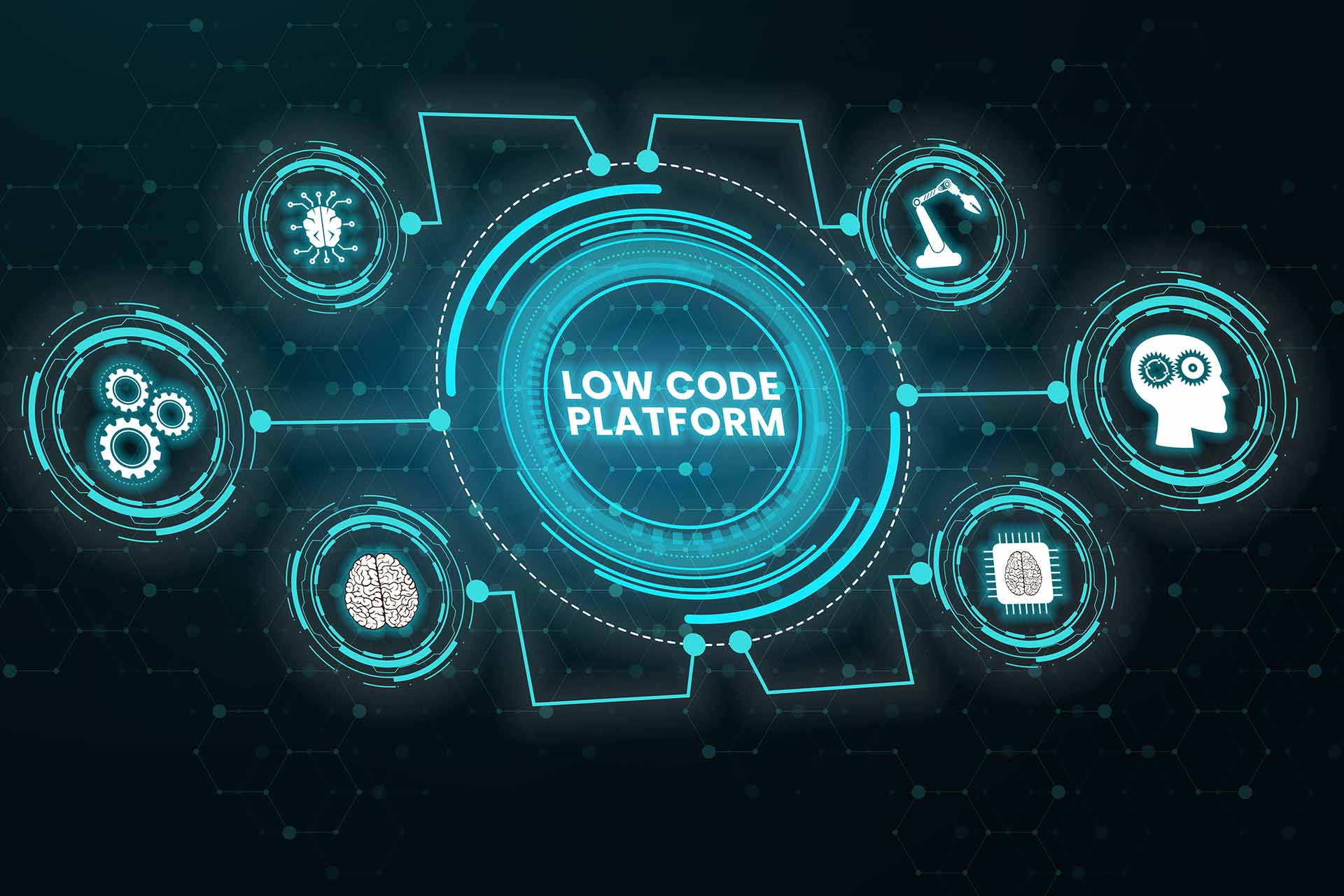
Low-code application development is already commonplace for global business giants, but in Finland, people are just slowly getting acquainted with the low-code way of creating new applications. The term refers to a coding-disruptive approach where applications are developed by extracting pre-built elements and functionality from a library – thus requiring very little actual coding.
In its press release published in summer 2021, Gartner estimates that up to 65% of all application development will be done on low-code platforms and that 80% of technical products will be created by non-technology professionals. According to Forrester, low-code platforms are already in the top three IT development targets. It is therefore a very significant phenomenon that is rapidly shaping the software industry.
In Finland, low-code application development is offered by only a handful of companies, but it is certain that its share in application production will grow significantly in the coming years. The low-code implementation model is hoped to contribute to alleviating, among other things, the coder shortage that has long plagued the software industry.
What is it about?
Low-code means faster, more agile and cost-effective software development, using off-the-shelf components and integration services to build functionalities.
MX (multi-experience) refers to the user experience of the same application across multiple digital user experiences, such as websites, mobile apps, chatbots, augmented and virtual reality, and wearable devices such as smartwatches. MX applications can use different forms of interaction: touch, sound, sight, and movement.
Breaking the barriers of application development
The change from traditional to low-code can be described in simple terms as follows: while an application is developed according to the traditional model by manually writing the necessary code from start to finish, the same work can be done by dragging the desired elements from a library with ready-made elements. Optimally, new technologies enable non-professional coders to develop applications.
While low-code and no-code technologies make the work of coders much easier in the future, they do not by any means eliminate the need for skilled software developers.
However, low-code implementation is also of significant help to professional coders, as the ready-made elements make the work much easier and faster. In short, the new approach avoids reinventing the wheel, i.e. an element or functionality that has been coded once and is already available in the library can be selected for use. The best thing is that elements can also be visually customized to match your brand.
The industry is talking about pixel-perfect implementation, where the development tool no longer places restrictions on how and with what devices the application can be used or how its user interface looks. The app developer is free to decide which of these to use.
While low-code and no-code technologies make the work of coders much easier in the future, they do not by any means eliminate the need for skilled software developers. Although the change allows laypeople to develop applications, in practice few people are willing or able to develop applications for professional use with a sufficient level of accuracy, reliability and quality – in addition to their previous tasks. However, the focus of professional coders is increasingly shifting from holistic coding to reusable components and service design.
Another important advantage of low-code application development is the MX multi-experience it conveniently enables. The ready-made elements selected from the library are automatically adapted to different interfaces, such as websites, mobile phones, smartwatches, and so on. This will avoid, for example, the significant additional work currently involved in traditional coding to tailor compatibility for iOS and Android environments. It also avoids the maintenance burden currently entailed by different hardware and software versions.
Why choose a combination of low-code + MX?
1. Speed and cost-effectiveness
A low-code solution can be implemented using off-the-shelf components in as little as a few days. The MX solution allows the same code to run on different devices and in different environments.
2. Compatibility
Allows integration without restrictions, including backend systems and cloud services. Often the integration is handled by the backend system, so you don’t have to code it yourself.
3. New uses and services
The combination enables the use of all devices, and brings the potential of the new technology to the SME sector. These include automatic speech and text recognition, translation functions, and virtual reality.
Pinja + low-code + MX
At Pinja, we implement low-code solutions on HCL’s platforms, which are HCL Domino, HCL Domino Volt, and HCL Volt MX. The platforms allow us to build applications for a wide range of needs and devices, and integrate them with other systems and services without limits. In addition to low-code, the platforms can scale to more complex systems, and can, for example, be built with reusable components.
We are the leading HCL expert in Finland and an official partner of HCL. We have decades of experience in numerous low-code client projects, and our services cover the entire lifecycle of solutions from definition to implementation, deployment and maintenance. We also provide all the necessary ICT services, such as cloud platforms and their maintenance and monitoring, so you can get a low-code application solution from us as a complete and maintainable service.
If you’re interested in the app development, please contact us – we’d be happy to tell you more.
Read more
HCL services - accelerate digital change with a safe and skilled partner
Cloud migration offers many benefits, and safeguards the future of business in an increasingly competitive environment
6 steps to developing a new digital service - added value to software development with service design

Jarkko Pietikäinen
I’m responsible for HCL business and the development of related digital services. I came to this job in 2018 when Netwell Oy, a company I started 25 years ago, was merged with Pinja. In my free time, I boat, dabble in ham radio activities, ski and cycle.
Back to the Pinja Blog
Categories
- Career at Pinja (68)
- Manufacturing (48)
- Knowledge Management (45)
- Production Development (44)
- Software Partnership & Tools (42)
- Sustainability (37)
- Wood and Forestry (37)
- Bioenergy and Recycling (27)
- IT Support and Outsourcing (24)
- Ecommerce (23)
- Maintenance (22)
- Artificial Intelligence and Machine Learning (15)
- Public Services (9)
- Compliance (1)